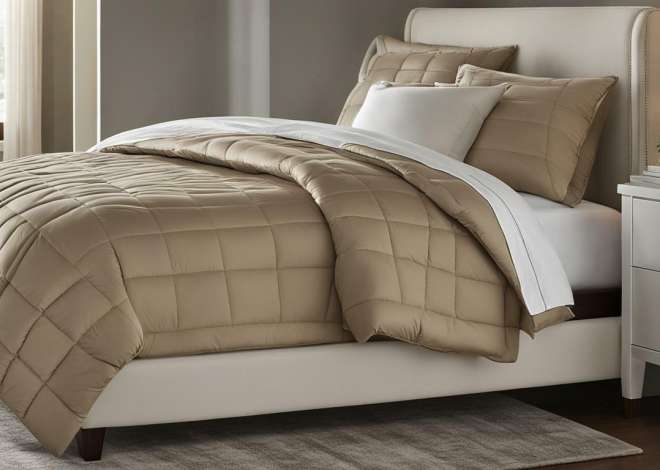
How to Clean Throw Pillows No Zipper
Throw pillows are a wonderful addition to any home decor, but they can easily collect dust, dirt, and stains over time. If your throw pillows don’t have a zipper for easy removal, cleaning them may seem like a daunting task. But fear not! With the right knowledge and a few simple steps, you can keep your throw pillows fresh and clean without the hassle of a zipper. In this article, we will guide you through the process of cleaning throw pillows without a zipper, ensuring that your pillows stay in great condition for years to come.
Understanding the Material of Your Throw Pillows
Before you dive into the cleaning process, it’s essential to understand the material of your throw pillows. Different fabrics require different cleaning methods, and using the wrong technique can damage the pillows. Here are some common types of fabrics you might find in your throw pillows:
Throw pillows can be made from a variety of materials, including cotton, linen, silk, wool, and synthetic blends. Each material has its own unique characteristics and care requirements.
Cotton is a popular choice for throw pillows due to its softness and breathability. It is easy to clean and can withstand regular washing. Linen, on the other hand, offers a more luxurious feel and is known for its durability. However, it may require more delicate handling during the cleaning process.
Silk throw pillows add a touch of elegance to any space. They are delicate and require special care to maintain their luster. Wool pillows are excellent for providing warmth and coziness, but they can be more challenging to clean due to their tendency to shrink.
Synthetic blends, such as polyester or nylon, are often used in throw pillows for their durability and resistance to wrinkles and stains. They are generally easier to clean and maintain compared to natural fabrics.
Identifying the fabric of your throw pillows can be done by checking the label or performing a fabric burn test. The burn test involves taking a small sample of the fabric and carefully burning it to observe the flame, smell, and residue left behind. This method can help you determine if the fabric is natural or synthetic.
Recognizing the Importance of Fabric Care
Fabric care is crucial to maintain the beauty and longevity of your throw pillows. Regular cleaning can remove built-up dirt and allergens while preserving the fabric’s color and texture. By dedicating some time to clean your throw pillows, you can enjoy a fresh and inviting atmosphere in your living space.
Proper fabric care not only keeps your throw pillows looking their best but also helps extend their lifespan. Different fabrics require different cleaning techniques, so it’s important to follow the manufacturer’s instructions or consult a professional cleaner if you’re unsure.
For cotton and linen pillows, machine washing on a gentle cycle with mild detergent is usually sufficient. However, silk and wool pillows may require handwashing or dry cleaning to avoid damage. Synthetic blend pillows can often be machine washed, but it’s important to check the care label for any specific instructions.
In addition to regular cleaning, it’s also essential to protect your throw pillows from direct sunlight, as prolonged exposure can cause fading and deterioration of the fabric. Using pillow covers or rotating the pillows periodically can help minimize sun damage.
By understanding the material of your throw pillows and taking proper care of them, you can ensure that they remain beautiful and comfortable for years to come.
Gathering Your Cleaning Supplies
Before you start cleaning your throw pillows, it’s important to gather all the necessary supplies. You don’t want to be halfway through the process and realize you’re missing something. Here are some essential cleaning supplies you’ll need:
Choosing the Right Cleaning Solutions
Not all cleaning solutions are suitable for all types of fabrics. Make sure to choose a cleaning solution that is safe and effective for the specific material of your throw pillows. Avoid using harsh chemicals that can damage or discolor the fabric. Instead, opt for gentle cleaners that are specifically formulated for delicate fabrics.
When selecting a cleaning solution, consider the fabric type of your throw pillows. If you have pillows made of cotton or polyester, a mild detergent mixed with water should suffice. For silk or velvet pillows, it’s best to use a specialized fabric cleaner to ensure the delicate fibers are not harmed. Always read the labels of the cleaning products to ensure they are compatible with your pillow’s material.
Essential Tools for Pillow Cleaning
Aside from cleaning solutions, you’ll need a few tools to help you clean your throw pillows. Here’s a list of essential tools you should have on hand:
- Soft bristle brush or a lint roller to remove surface dirt and debris.
- Mild detergent or fabric cleaner for spot-cleaning stains.
- A clean white cloth or sponge for gently blotting stains.
- A bucket or sink for hand-washing.
- A washing machine for machine-washable pillows.
When it comes to removing surface dirt and debris, a soft bristle brush or a lint roller can be your best friends. Gently brush or roll over the pillow’s surface to lift off any loose particles. This step will help prepare the pillows for a deeper clean.
For spot-cleaning stains, a mild detergent or fabric cleaner is essential. Dilute the detergent in water according to the instructions and apply it to the stained area. Use a clean white cloth or sponge to gently blot the stain, being careful not to rub it further into the fabric. This method will help lift the stain without causing damage.
If you have delicate or hand-wash only throw pillows, a bucket or sink will come in handy. Fill the container with lukewarm water and add a small amount of mild detergent. Gently submerge the pillows and use your hands to agitate the water, allowing the detergent to penetrate the fabric. Rinse the pillows thoroughly to remove any soap residue.
For machine-washable throw pillows, using a washing machine is the most convenient option. Place the pillows in the machine, making sure not to overload it. Use a gentle cycle with cold water and a mild detergent. Once the cycle is complete, remove the pillows and allow them to air dry completely before putting them back on your furniture.
Pre-Cleaning Steps for Throw Pillows
Before you jump into deep cleaning your throw pillows, there are a few pre-cleaning steps you should take to ensure the best results:
Dusting Off Your Pillows
The first step in cleaning your throw pillows is to remove any loose dust or dirt. Use a soft bristle brush or a lint roller to gently brush or roll away surface debris. This will make the cleaning process more effective and prevent any dirt from smearing or embedding deeper into the fabric.
When dusting off your pillows, it’s important to pay attention to the seams and crevices where dust tends to accumulate. Take your time and be thorough in your dusting to ensure that all visible dirt is removed.
Additionally, if you have pets, you may need to use a pet hair remover tool to get rid of any stubborn pet hair that may have found its way onto your throw pillows. This will help to ensure that your pillows are as clean as possible before proceeding with the deep cleaning process.
Spot Cleaning Stains
If your throw pillows have any visible stains, it’s important to address them before proceeding with the overall cleaning. Apply a small amount of mild detergent or fabric cleaner to a clean white cloth or sponge and gently blot the stained area. Avoid rubbing or scrubbing, as this can damage the fabric. Instead, blot the stain until it lifts.
When spot cleaning stains, it’s crucial to use the appropriate cleaning solution for the type of fabric your throw pillows are made of. Different fabrics require different cleaning methods, so be sure to check the care instructions or consult a professional if you’re unsure about the best approach.
In some cases, you may need to repeat the spot cleaning process multiple times to completely remove stubborn stains. Patience and persistence are key when it comes to tackling tough stains on your throw pillows.
Once you have successfully spot cleaned any stains, allow the treated areas to air dry completely before moving on to the next step. This will prevent any residual moisture from causing mold or mildew growth within the pillows.
Deep Cleaning Your Throw Pillows
Now that you’ve taken care of the pre-cleaning steps, it’s time to deep clean your throw pillows. The cleaning method you choose will depend on the fabric type of your pillows. Here are two common techniques:
Hand Washing Techniques
Hand washing is the preferred method for delicate fabrics like silk or wool. Fill a sink or bucket with lukewarm water and add a small amount of detergent specifically formulated for the fabric type. Gently submerge the throw pillows in the water and agitate them by squeezing and pressing them. Avoid twisting or wringing as this can misshape the pillows. Rinse thoroughly to remove any soap residue and gently squeeze out excess water.
When hand washing your throw pillows, it’s important to take extra care with delicate fabrics. For silk pillows, you may want to use a silk-specific detergent to ensure the fabric remains soft and smooth. Wool pillows, on the other hand, require a gentle touch to prevent shrinking or felting. Take your time and be gentle when agitating the pillows to avoid damaging the delicate fibers.
After rinsing the pillows, you can gently squeeze out the excess water. Avoid wringing them as this can cause the filling to clump or the fabric to stretch. Instead, apply gentle pressure to remove as much water as possible. Once you’ve completed this step, you can move on to drying the pillows.
Machine Washing Guidelines
For machine-washable throw pillows, place them in a laundry bag or pillowcase to protect them during the wash cycle. This extra layer of protection will help prevent any damage to the fabric or the pillow’s filling. Make sure to choose a laundry bag or pillowcase that is large enough to accommodate the size of your pillows without overcrowding them.
When using a washing machine, it’s important to select the appropriate cycle and water temperature. Opt for a gentle cycle to minimize any potential damage to the fabric. Cold water is generally recommended to prevent colors from bleeding or fading. However, always check the care label on your pillows for specific instructions regarding water temperature.
Once you’ve loaded the pillows into the machine and added a small amount of mild detergent, you can start the wash cycle. Keep an eye on the machine throughout the cycle to ensure that the pillows are not becoming tangled or misshapen. If you notice any issues, pause the cycle and manually readjust the pillows to ensure they are evenly distributed.
After the machine has completed the cycle, remove the pillows from the laundry bag or pillowcase. Take a close look at the pillows to check for any remaining dirt or stains. If you spot any areas that require further attention, you can use the spot cleaning method mentioned earlier to target those specific areas.
Remember, machine washing is not suitable for all types of throw pillows. Always check the care label or manufacturer’s instructions before attempting to machine wash your pillows. Some fabrics may be too delicate or have special cleaning requirements that cannot be met through machine washing.
By following these hand washing and machine washing guidelines, you can ensure that your throw pillows are thoroughly cleaned without compromising their quality or appearance. Remember to always check the care instructions for your specific pillows and take the necessary precautions to protect them during the cleaning process.
Drying Your Throw Pillows
Proper drying is crucial to prevent mold or mildew growth and maintain the shape of your throw pillows. Here are a couple of drying methods you can use:
Air-Drying Tips
If weather permits, air-drying your throw pillows is the best option. Lay them flat on a clean, dry surface, preferably in a well-ventilated area. Flip the pillows occasionally to ensure even drying. Avoid direct sunlight, as this can fade the fabric colors. Depending on the fabric type and thickness, drying may take several hours to a day or more.
Using a Dryer Safely
If you need to speed up the drying process or don’t have access to outdoor drying space, you can use a dryer. Place your throw pillows in the dryer on a low heat or delicate cycle. Add a few clean, dry towels to help absorb moisture and prevent clumping. Check on the pillows frequently to ensure they don’t overheat or shrink. Once they are dry, remove them from the dryer and give them a gentle fluff to restore their shape.
Maintaining Your Throw Pillows
After the thorough cleaning process, it’s important to establish a regular cleaning schedule to maintain the cleanliness and beauty of your throw pillows. Here are some tips for maintaining your pillows:
Regular Cleaning Schedule
Creating a cleaning routine for your throw pillows will prevent dirt and grime from building up over time. Set a reminder to give your pillows a thorough cleaning every few months and spot clean as needed. By staying consistent, you can keep your throw pillows looking fresh and inviting.
Preventing Stains and Damage
Prevention is key when it comes to maintaining your throw pillows. Avoid eating or drinking near them, especially if they are made from delicate materials. If you have pets, keep an eye on them to prevent any accidents or scratches. Using pillow covers or decorative pillowcases can also add an extra layer of protection and make cleaning easier.
Troubleshooting Common Cleaning Issues
Despite your best efforts, you may encounter some stubborn stains or issues during the cleaning process. Here are a couple of common problems and how to deal with them:
Dealing with Stubborn Stains
If a stain persists even after spot cleaning, don’t panic. There are a few methods you can try to remove stubborn stains, depending on the fabric type. For example, a mixture of hydrogen peroxide and water can help lift tough stains on white cotton or polyester pillows. Always test the solution on a small, inconspicuous area first to ensure it doesn’t cause any discoloration or damage.
Restoring Fluffiness After Washing
After washing, your throw pillows may lose some of their fluffiness. To restore them to their former glory, give them a gentle shake and pat them to distribute the filling evenly. If necessary, place the pillows in a dryer on a low heat setting with a few tennis balls or dryer balls. The balls will help fluff the pillows while reducing clumping.
FAQs
1. Can I use bleach to clean my throw pillows?
We do not recommend using bleach on throw pillows, as it can weaken the fabric and cause discoloration. Stick to gentle cleaning solutions that are safe for the fabric type of your pillows.
2. Are all throw pillows machine-washable?
No, not all throw pillows are machine-washable. Some delicate fabrics require hand washing to prevent damage. Always check the care label or do a fabric burn test to determine the appropriate cleaning method.
3. Can I put my throw pillows in the dryer?
Yes, if your throw pillows are machine-washable, you can put them in the dryer on a low heat or delicate cycle. Adding a few dry towels will help absorb moisture and speed up the drying process.
4. What if my throw pillows have feathers or down filling?
If your throw pillows have feathers or down filling, it’s best to consult the care instructions that came with the pillows. In most cases, professional cleaning is recommended for pillows with feathers or down.
5. How often should I clean my throw pillows?
It’s a good idea to give your throw pillows a thorough cleaning every few months, depending on how often they are used. Spot clean any stains as soon as they occur to prevent them from setting.
6. Can I use a washing machine with an agitator to clean my throw pillows?
We recommend using a front-loading or top-loading washing machine without an agitator for cleaning throw pillows. Agitators can be too harsh and cause damage to the pillows.
7. I have a velvet throw pillow. How should I clean it?
Velvet throw pillows require special care. To clean them, use a soft brush or vacuum cleaner with a brush attachment to remove surface dirt. Spot clean any stains using a gentle detergent and a clean, damp white cloth. Be careful not to rub too vigorously, as this can damage the velvet fabric.


